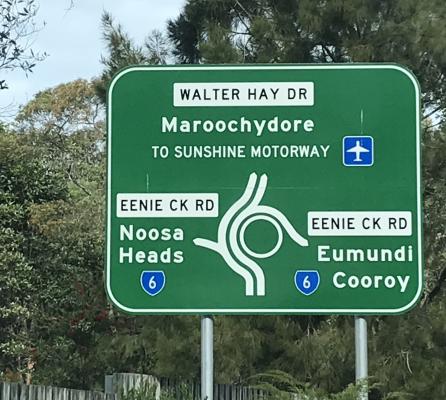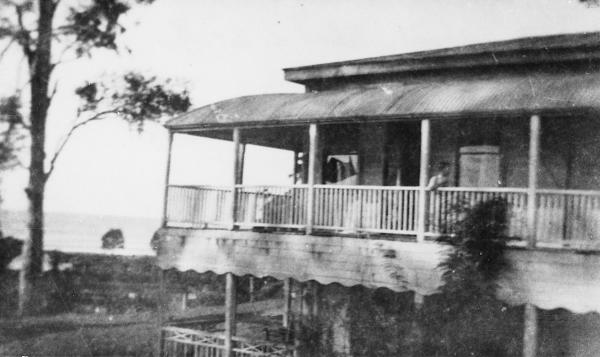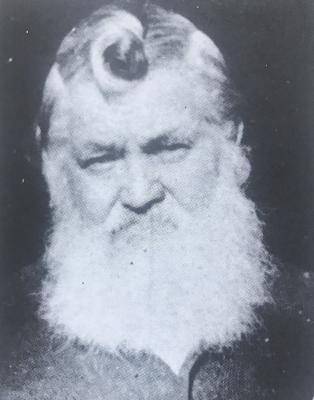PHIL JARRATT continues to investigate the significance of place and street names in the region, this week focussing on Walter Hay Drive and the person known as the father of Noosa.
Walter Hay Drive, Noosaville
People who know anything about Noosa’s history will probably have a vague idea who Walter Hay was. People who know anything about Walter Hay’s history will probably be able to tell you that his gravestone in Tewantin Cemetery declares him the “father of Noosa”. Beyond that, not so much.
But since one of our major trunk routes, connecting Noosaville to the Sunshine Coast Motorway, is named after old Walt, let’s give him his dues.
Born in Aberdeen, Scotland in 1833, Walter Hay was to become one of the most important of Noosa’s founding fathers but his first foray into Noosa land speculation, a lease over 16,000 acres at Lake Cootharaba, was an abysmal failure. The land was neither surveyed nor developed, and after Queensland separated from New South Wales, new land laws were enacted in 1860 that made it even more difficult to turn a profit on the marshy lake-lands.
But taking a haircut on a land deal would not have fazed the young Walter Hay, who, with his baby brother Robert and parents Robert and Isabella, had sailed into Port Jackson on the Lady Kennaway as free settlers in 1838, and faced a life of colonial hardships through most of his childhood.
Details of Walter’s early life in Australia are scant, but by his late teens in the early 1850s, we know he had made his way north where he found work as a stockman on outlying cattle runs. One of his bosses during this time was a wealthy squatter named John Eaton, who had a property called “Teebar”, near Maryborough, which was where Walter met the squatter’s daughter, Mary Ann, in 1855. They were married the following year at Teebar and within months their first child, a daughter, was stillborn.
Over the coming years Mary Ann was to be mostly at home, pregnant, while Walter moved from one business venture to the next, often with the financial help of his father-in-law. By late 1867, the large Hay brood was back in Maryborough, where Walter bought the Prince’s Ferry business. With the discovery of gold at Gympie that year, the Prince’s Ferry became a thriving concern, and Walter was soon a gold rush success story, but Mary Ann had little time to enjoy their prosperity.
In June 1870, she died aged 35, following the birth of twins who were successfully delivered, becoming the Hays’ ninth and tenth children, although two had previously been stillborn. Mary Ann was surrounded by family at her father’s Rosehill property, but Hay was out bush and beyond contact, unable to be at the deathbed, or at the large funeral a few days later.
In fact, Walter had been building the Gympie-Tewantin “shortcut” coach road for the Queensland surveyor-general in June 1870 when his twins were born and Mary Ann died. With no communications reaching the rough bush camp on the Wolvi Range near Kin Kin, the news was almost a week old when he received it, and Mary Ann had already been laid to rest. There are no reports as to whether he took time off to mourn, or simply lost himself in the tough, back-breaking work of land clearing, but the project was completed on time. When he eventually got back to the Gympie Lands Office in October, he was not a happy man.
Before starting the coach road, he and another investor named Grainger Ward had leased large chunks of the area soon to be surveyed for the village of Tewantin. A newly widowed dad with eight children under 14 to care for, Walter probably had every reason to be angry about the way life was unfolding, but his specific issue when he called at the Lands Office was that in his absence the survey had been completed and had resumed much of his and Ward’s selections. Eventually both men were allowed to make new selections, with Ward taking up an area of riverfront to the north of town which became Ward Estate, and Hay taking riverfront south of Lake Doonella which he named Hilton Park.
By the 1880s Walter was the king of Noosa real estate, and the jewel in his crown was Bay View House, which he had built overlooking Laguna Bay for he and second wife Susannah. (After several rebuilds it is now Halse Lodge.) Walter extended the original building and ran it as a guesthouse, feeding his guests from an extensive market garden on tidal Hay’s Island, now Noosa Sound, where he also kept the Noosa Light.
In his later years Walter fought hard to have Noosa recognized as a major shipping port, while also campaigning for new roads and bridges to join the river towns. Although the 1890s depression put a dent in his property portfolio, he died in 1907 a wealthy and respected man, surrounded by an extensive family who carried on his businesses.









